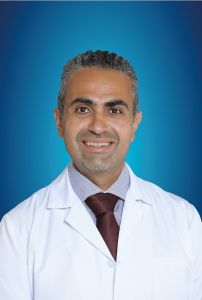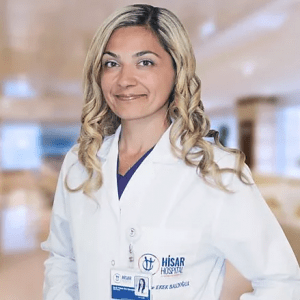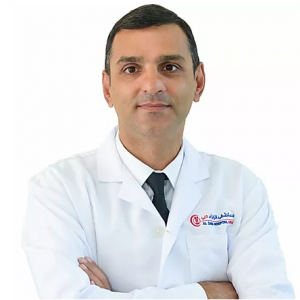Anterior Posterior Repair-Colporrhaphy
Anterior and Posterior Repair (Colporrhaphy) Anterior and posterior repair are minimally invasive procedures used to correct pelvic organs that have dropped out of their normal positions. … Read More
Top Doctors For Anterior Posterior Repair-Colporrhaphy Treatments
Top Hospitals For Anterior Posterior Repair-Colporrhaphy Treatments
Anterior Posterior Repair-Colporrhaphy
Anterior and posterior repairs (also known as colporrhaphy) is a surgical repair of a defect and strengthening of the vaginal wall. It is a type of reconstructive surgery that can restore the morphology and function of a patient’s pelvic organs when they have fallen out of their original or normal positions. It is a set of minimally invasive procedures.
The body operates just the way an average machine does. There are seasons of doing work, seasons of breaking down, and seasons of repairs too. When the tissues that support the pelvic organs become weak, stretched, or damaged, all due to the incidence of age (because of old age) or maybe childbirth; for example, these organs can fall out of place and consequently dropdown. They also end up pressing against the wall of the vagina. This development is known as ‘pelvic organ prolapse’.
These dropping organs create a bulge in the vagina, which leads to or results in discomfort, pressure, pain, as well as bowel dysfunction, and many other signs and symptoms. 1:10 (each one in every ten) women need anterior and posterior repairs. To restore normalcy, however, colporrhaphy is very essential and vital.
ANTERIOR COLPORRHAPHY
Anterior repairs are used to tighten the front (also called the anterior) wall of the vagina. During the surgery, the bladder is repositioned correctly and carefully, back in its normal position or place, and the supporting tissue between the front of the vagina and the bladder is tightened and strengthened to hold the pelvic organs in place. The pressure of the sagged organs on the walls of the vagina is relieved.
POSTERIOR COLPORRHAPHY
A posterior colporrhaphy is a vaginal procedure that is usually done to correct a rectocele or herniation of the rectum into the vagina. Although these posterior repairs can be done alone, it is always combined with additional prolapse procedures, to correct all prolapse areas in the vagina.
A rectocele results when the fibromuscular layer or the support layer (as it is called) between the rectum and vagina is weakened, due to lifting of several heavyweights, natural childbirth (or vaginal delivery), old age, or diseases that affect the connective tissue.
BENEFICIARIES
Women are known to be the sole, principal, chief beneficiaries of anterior and posterior repairs (colporrhaphy), especially women of age 40 and over that. The effects of old age and that of childbirth are the major contributing causes of this occurrence.
Symptoms
• A soft bulge of tissue in your vagina that might protrude through the vaginal opening.
• Difficulty having a bowel movement.
• Sensation of rectal pressure or fullness.
• A feeling that the rectum has not completely emptied after a bowel movement
Causes
PROCEDURES
The procedures for the anterior repairs in a patient include all of the below:
- Midline incision to the vagina lying over the bladder and urethra.
- A cut in a plane, directly below the vagina and by the side of the bladder, allows the damaged fascia supporting the bladder to be exposed.
- With the use of sutures, fold the fascia in the midline.
- Permanent mesh strengthens the repair and it is anchored through the obturator foramen and passes through the small incisions at both sides of the adductors of the patients.
- Then, afterward, the vaginal skin is sewn up and covered.
The various outlined procedures or steps for carrying out the posterior repairs include all of the below:
- An incision is made to the posterior wall of the vagina.
- A cut below the vagina to identify the rectovaginal fascia and open the space between the rectum and the pelvic floor muscles to the sacrospinous ligaments is subsequently made.
- With the use of sutures, centrally and carefully fold the fascia to correct defects in the fascia.
- Permanent mesh strengthens the repair and it is anchored bilaterally to the pelvic sidewall and passed through a small incision, approximately 3cm, lateral and down from the patient's anus.
- Consequently, to round it up, the vaginal skin is sewn up and then closed.
RECOVERY RATE
If you are a patient who needs colporrhaphy repairs, you should expect to stay in the clinic for three to six (3–6) days. However, the decision to discharge you from the hospital bed is solely and most importantly the prerogative of your doctor. Complications may come up that may delay your due discharge. Such complications that may come up may include infections and side effects to certain medications, healing delay or stitched area, and abnormal vaginal discharge.
The vaginal pack is removed on the first day, and the bladder catheter is also removed after the first few days. In the early post-surgical period, you should avoid exerting pressure on the repaired area. Such pressures may come or be derived from lifting various heavyweights, straining, coughing, excessive laughter, and/or constipation. Maximal fibrosis around the repair occurs in three months, therefore, care needs to be taken seriously, during this period.
Report any emergency development to your doctor and see him/her after six weeks, for a review, and possibly sexual activities by then. You can resume work at approximately four to six (4–6) weeks if your work is not the least strenuous, but it is far safer to discuss with your doctor. At week 12, your normal activities are allowed to resume. Even so, you must avoid doing certain things during this period. Such prohibited things, among others, include all of the below:
- Lifting heavy weights greater than 15kg.
- Gaining weight or becoming obese.
- Smoking.
- An excessive quantity of alcohol.
RISKS / COMPLICATIONS
The major potential complications and challenges which may arise in the process of the anterior and posterior repairs (colporrhaphy) are listed in they are:
- Development of recurring prolapse (in 5%–15% of women).
- Urinary tract infection (in 1%–5% of women).
- Mesh erosion or infection (in 5%–10% of women).
- Urinary leakage development, in only about 5% of women.
- Difficulty in passing urine out of the bladder, which occurs in only one percent of women.
- Constipation after surgery (in 1%–5% of women).
- Damage to the bladder, bowel, urethra, or uterus.
- Excessive bleeding that needs a blood transfusion, which occurs in rare circumstances (in less than one percent of women).
- Clot formation after surgery.
- Ongoing vaginal pain or pain during sexual intercourse (in 1%–5% of women).
- Further surgery to correct the anomaly, in one or two, out of a thousand (1–2 per 1000) cases.
SUCCESS RATE
The success rate of the anterior and posterior repairs is about 85%–90%. Serious complications are rare with this type of surgery — minimally invasive procedures. However, no surgery goes with any risk attached and involved.
FAQ
What is colporrhaphy or anterior posterior vaginal wall surgery?
It is a surgery which involves removal of a part of the vaginal wall; either from the front or the back wall, folding of the ligaments that support the pelvic organs and pushing of the urinary bladder upwards in the pelvis.
Who should get colporrhaphy or anterior posterior vaginal wall surgery?
Women who have developed cystocele and/or urethrocele are recommended to undergo anterior wall surgery whereas posterior wall surgery is required to correct rectocele.
What is a cystocele/ urethrocele/rectocele?
Prolapse of the bladder, urethrocele or rectum through the vaginal wall, i.e. when a part of them protrudes into the vaginal orifice, it is referred to as cystocele, urethrocele & rectocele respectively.
What predisposes to cystocele / urethrocele / rectocele?
Childbirth, old age, long standing cough or heavy lifting, chronic constipation, hysterectomy and genetics are common risk factors for prolapse.
What is the duration of colporrhaphy or anterior posterior vaginal wall surgery and duration of hospitalization?
The surgery takes 3-4 hours typically and is carried out under general or epidural anaesthesia. Patient might be kept under observation for variable duration, at least a day.
When can normal activities be resumed after this surgery?
Usually, normal activities, including sexual intercourse, can be resumed after 3-4 weeks of the surgery in uncomplicated cases.
What are the complications of anterior posterior vaginal wall surgery?
Some complications are bleeding within a day or till 5-10th day, infection in the wound, difficulty in passing urine, recurrence of prolapse and painful coitus post-surgery and injury to bladder (which can cause formation of fistulae between vagina and bladder or rectum)
What are the non-surgical alternatives?
Alternatives are estrogen therapy and use of pessary (a soft contraption inserted into the vagina to control mild prolapse). However, in severe or advanced prolapse, colporrhaphy or similar surgical interventions like Paravaginal defect repair, colpoperineorrhaphy, and pelvic floor repair surgery are the only cure.
Is this surgery safe during pregnancy?
In early pregnancy (up to 18 weeks), non-surgical alternatives are administered, and later, surgery may or may not be recommended to avoid a complicated delivery/abortion/premature delivery.
Is anterior repair a major surgery?
Unmistakenly and undeniably, yes, of course, an anterior repair is a major operation that is usually recommended after other simpler treatments have failed. Your bladder (if you're a patient) should be supported. It is an in-hospital surgery and you may be admitted for not less than three to six (3–6) days. Usually, general anesthetics are involved.
How long does it take someone to recover from a posterior repair?
In three months, you should be able to resume your normal activities. Do not have sexual intercourse for at least, six weeks and until any bleeding or discharge stops. Do not lift anything heavy. Avoid standing for long periods. You may have yourself resume your work in four to six (4–6) weeks. Take healthy diets and more fiber and probiotic foods.
Can I resume my sexual activities after a successful repair?
Sex is a normal requirement which everyone needs in life. It energizes the body and provides comfort. However, do not engage in sexual intercourse for at least six weeks after a posterior repair. Still, avoid carrying heavy weights and return to work once the doctor says you can. At three months, you can be able to continue performing your daily activities.
What foods should I eat after a successful colporrhaphy?
Healthy foods and diets can contribute to speedy healing. It is advisable you eat more foods after completing the anterior and posterior repairs, or generally, any other treatment, and take much fiber. Probiotics (which are foods or dietary supplements like yogurt) fight infections in our body. Seafood is also good food. Fish, snails, and foods low in calories should form your table. Avoid cholesterol, caffeine, alcohol, and much salt. Do not smoke at all. Take many fluids such as water.




































![DR [PROF.] KARL MILLER](https://anavara.com/wp-content/uploads/2021/10/DR-PROF.-KARL-MILLER-244x300.jpg)








































































































